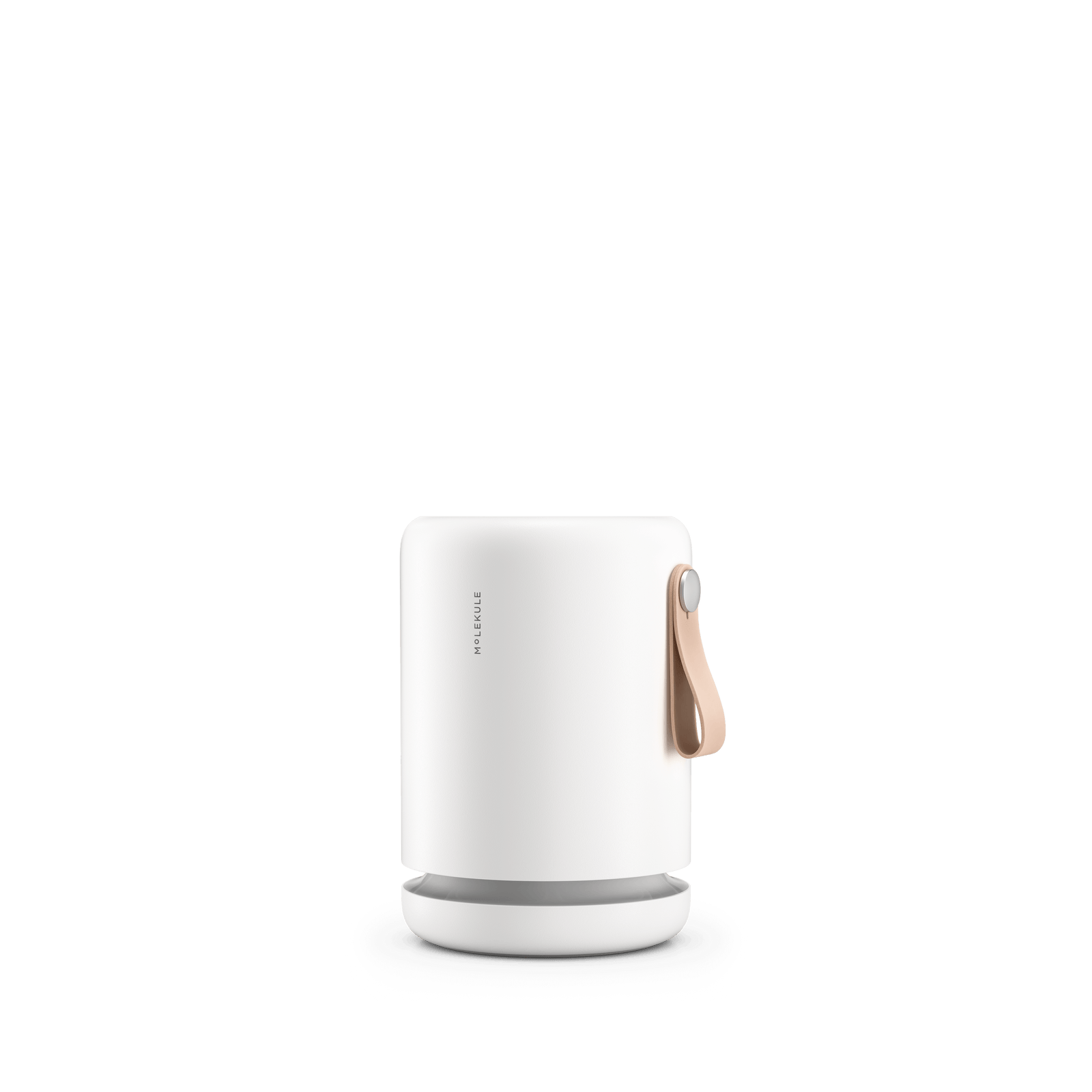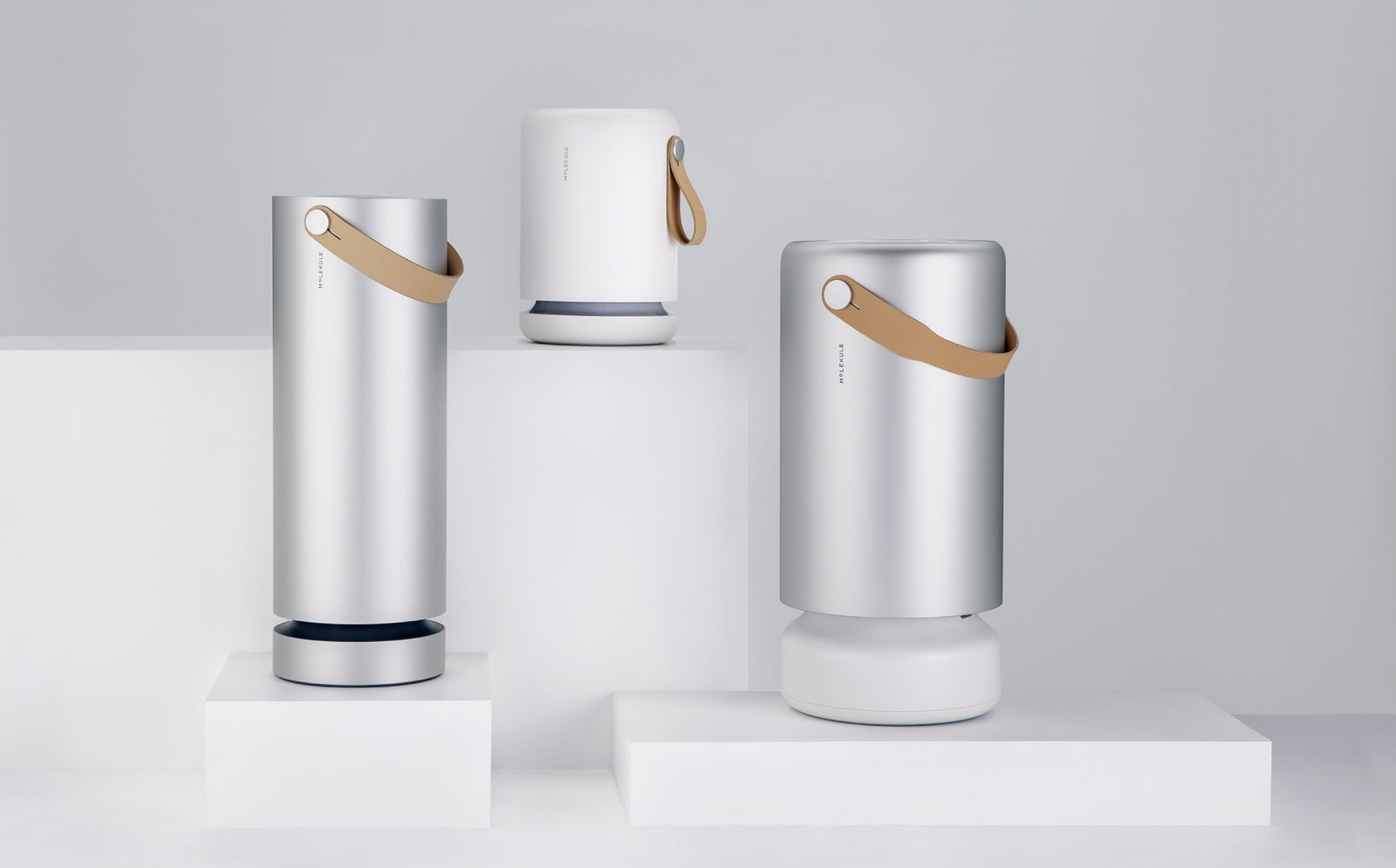Concerns about air quality are becoming more common, especially as wildfire season stretches longer each year and air pollution remains a pressing issue. Unfortunately, air pollution is not just confined to the outdoors, but there are steps you can take to protect the air quality in your home. One of the most effective ways is to use an air purifier. Traditional air purifiers work by capturing airborne pollutants that pass through the filter and trapping them within the unit. This can work well, but it is not the only air quality solution.
Molekule air purifiers work differently from other air purifiers. Our proprietary technology goes a step beyond the most common types of mechanical air filters by destroying infectious microbes and toxic chemicals in the air.
Though PECO technology is not new (it was developed over the last 25 years), it may still be unfamiliar to the public. Read on for a summary of how Molekule improves on traditional methods of air filtration by capturing and destroying different types of organic air pollution.
How does PECO clean indoor air?
Photo Electrochemical Oxidation (PECO) technology — the technology inside all Molekule air purifiers — was developed over the past two and a half decades as a newer way to mitigate indoor air pollution. Instead of trapping organic pollutants within the unit like other air purifiers, PECO destroys them at the chemical level.

PECO air purifiers combine traditional air filtration principles with innovative chemistry to effectively remove pollutants from the air. The Pre-Filter found in most Molekule models is similar to the mechanical filters found in other air purifiers. Its purpose is to capture larger air pollution particles and protect the PECO-Filter from substances that could block the light that activates our proprietary nanocatalyst.
This nanocatalyst is what makes PECO technology so special. All PECO-Filters are made up of fibers coated in this nanocatalyst, which helps the filter capture and destroy airborne pollutants as they pass through the unit. While the organic pollutants are trapped in the filter, the light-activated nanocatalyst produces hydroxyl radicals that break them down through a process called oxidation.
Oxidation is a chemical reaction that breaks down organic matter, such as when plants and animals decompose. The oxygen in the atmosphere naturally oxidizes organic pollutants. However, because this process is slow, it does not prevent humans from exposure to this kind of pollution.
The nanocatalyst in PECO-Filters speeds up the oxidation process by using hydroxyl radicals to attack the captured pollutants, such as bacteria, viruses, mold spores and volatile organic compounds (VOCs), and breaks them down into harmless gases like carbon dioxide and water vapor.
Hydroxyl radicals are extremely reactive substances. They are created from trace amounts of water found in the air, and they are quick to react with the first thing with which they come into contact. This includes pollutants, as well as other molecules in the air. Because they are so reactive, hydroxyl radicals only exist for a fraction of a second before they either:
- React with (and break down) pollution particles, or
- Turn back into water molecules if there are no pollutants present.
How do traditional filters clean the air?
Traditionally, air purifiers use a process called mechanical filtration to remove pollutants from indoor air. This technology captures airborne pollution by forcing contaminated air through a mesh of tiny fibers. As the air runs through the filter, some of the pollutants are caught in the fibers, and cleaner air is released from the air purifier.
The type and percentage of pollutants caught by the air purifier depends on the type of filter it uses. For example, true HEPA filters should capture at least 99.97% of mold spores, pollen, dust, bacteria and other airborne particles with a size of 0.3 microns (µm). “HEPA-style” filters, on the other hand, are not held up to this same standard and may remove significantly less pollution from the air.
While PECO may resemble HEPA filters, it goes far beyond relying on a labyrinth of fibers to handle air pollution. The PECO catalyst sets it apart because it triggers a powerful chemical reaction and breaks down organic pollutants at the smallest scale.
PECO destroys microbes in the air
Microorganisms, also called microbes, are microscopic organisms that are too small to be seen by the naked eye. They can be found everywhere — in the water, soil and even the air we breathe. Common types of microbes include bacteria, fungi and viruses.

Not all microbes are harmful. For example, most bacteria are not dangerous for humans. Some are even healthy, such as the lactic acid bacteria in your bowels that help you digest food. However, other microbes are not as benign (think of salmonella and staphylococcus bacteria or the viruses that cause the flu, measles and the common cold.)
Mold, bacteria and viruses can create toxins, trigger allergy symptoms and reproduce in your body to cause serious infections. PECO technology helps clean the air of microbes by breaking them down potentially before they have a chance to grow or infect anyone.
Additionally, many viruses can only infect people if their outer envelopes are intact. Because PECO can quickly degrade the surface of this outer envelope, it effectively inactivates viral particles in the air.
When microbes land on the nanocatalyst-coated fibers in a PECO-Filter, the hydroxyl radicals immediately start to break them down. This process also neutralizes any harmful endotoxins or mycotoxins that they may be carrying.
PECO’s ability to inactivate viruses has been tested by aerosol science, engineering, and disease transmission experts from the University of Minnesota. These researchers designed a series of experiments to determine the capture rate of PECO-Filters and their impact on a virus’s ability to grow and cause infection.
They found that the PECO-Filters inside Molekule Mini could inactivate 99.99% of viruses on a single pass through the unit.
This high rate of effective viral inactivation is why the Food and Drug Administration (FDA) has granted Molekule Air Mini and Air Pro FDA 510(k) clearance as Class II medical devices. This designation means that these Molekule air purifiers are officially recognized for their ability to destroy airborne bacteria, viruses and mold for medical purposes.
How do traditional filters handle microbes?
The mechanical filters in most air purifiers lack the technology to destroy airborne microbes. Instead, they only trap them in their filter’s fibers. How well they do this depends on the quality of the filter. True HEPA filters may be able to trap bacteria, viruses and mold spores, but less efficient filters may have trouble capturing microbes.
Even in mechanical filters that can effectively remove microbes from the air, there is still the potential danger that comes with concentrating harmful organisms inside an air purifier. Viruses, bacteria, and mold may grow on mechanical filters, using the trapped dust and pet dander as food. In carbon filters, the activated carbon itself can also fuel the growth of some bacteria.
PECO destroys airborne chemicals
Gaseous chemicals, such as volatile organic pollutants (VOCs), are another common type of pollution PECO targets. These toxic gases are commonly emitted by manufactured products, such as furniture, textiles and cleaning solutions. Exposure to VOCs has been linked to many health risks, including:
- Irritation to the eyes, nose, and throat;
- Worsened asthma symptoms;
- Difficulty breathing;
- Nausea or vomiting;
- Headaches;
- Skin irritation or rashes;
- Fatigue;
- Dizziness or loss of coordination;
- Liver, kidney and central nervous system damage;
- Cancer.
The severity of these symptoms depends on the specific VOCs, the length of exposure and the concentration of VOCs in the air. Children, elderly adults and individuals with asthma may be especially sensitive to the effects of VOC exposure.
PECO technology is very effective at destroying VOCs because they are highly susceptible to oxidation. Eventually, all VOCs react with oxygen to break down into carbon dioxide and water vapor. By creating highly reactive hydroxyl radicals, PECO speeds up this oxidation process and removes VOCs from the air much faster than they would dissipate on their own.

Intertek, a Nationally Recognized Testing Laboratory (NRTL) by OSHA, independently tested Molekule Air Pro and Air Mini to see how well PECO could handle common household VOCs. They found PECO to be effective against all the chemicals they tested, including formaldehyde, toluene (paint fumes), limonene (household smells) and ozone.
Lawrence Berkeley National Laboratory, a U.S. national laboratory that conducts scientific research on behalf of the Department of Energy, also independently tested the Molekule Air’s performance against VOCs with similarly promising results. You can read more about their research here.
VOCs, ozone and PECO technology
The term “VOC” is used to describe a wide range of chemicals, not all of which are harmful. However, even non-toxic VOCs may become dangerous if they are given a chance to react with ozone in the air. This chemical reaction can create completely new chemicals that may cause harmful health effects. For example, formaldehyde, a toxic VOC found in many households, can be created by this kind of reaction.
Ozone is a common indoor pollutant. Like VOCs, it can be broken down by the light-activated catalyst (called a photocatalyst) found in PECO-Filters. Molekule is not the only air purifier to use photocatalysts. However, other brands typically use powerful UV lights to activate their catalysts, which may produce ozone and contribute to indoor air pollution.
Molekule air purifiers use UV-A light to activate the photocatalyst. This safe light is commonly found as the purplish light you probably know as a “blacklight.” While this light has enough energy to activate the catalyst on the PECO-Filters, it is not known to produce ozone.
How do mechanical filters handle airborne chemicals?
While HEPA filters likely cannot capture VOC cases most air filters with a HEPA filter also have a carbon filter which along with PECO, is one of two types of air filters that can effectively remove VOCs from the air..
Activated carbon filters consist of a bed of activated charcoal or other form of carbon. As air passes through the filter, VOC molecules get stuck to the carbon through a process called adsorption. Like other mechanical filters (and unlike PECO-Filters), carbon filters do not do anything to destroy the pollutants they capture.
In summary, the main reason PECO air purifiers are different from other types on the market is that they actually destroy the organic pollutants they capture. PECO is effective against a wide range of air pollution, including microscopic toxic chemicals, viruses and bacteria.
For more evidence that PECO technology destroys pollutants, you can read the lab reports on our papers page.












